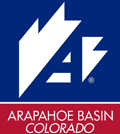Six Easy Steps to Ski Country Solvency — Ramen Not Included
A $250 daily lift ticket? Yup
A $30 burger (fries not included)? Sure.
A $10 cup o’ joe (cocoa included)? Why not.
A $15 glass of domestic beer? Youbetcha.
A day on the hill can easily run a person $300. And that’s not including the cost of a little apres fun.
Sure, skiing and snowboarding in modern-day US of A is expensive, but it doesn’t have to be so pricey that you have to knock off a bank or mortgage the kids to do so.
Or worse: Eat ramen every day at every meal.
The following are six handy tips to keep you dreaming of powder rather than undergoing the nightmare of debtor’s prison.
Your Pass to Affordability
The modern mega-pass option, though a loathsome prospect for some who believe it is the direct cause of all the ills that plague ski country, is perhaps the easiest way to shave more than a few bucks off your ski budget.
The base Icon Pass, which gives you nearly unlimited access to more than 35 resorts in North America, goes for $829, if you buy it early. The base Epic pass, good at 40 or so resorts, goes for $949. And the Indy Pass, which gives you two days at more than 100 independent resorts, weighs in at $399 (all prices for 2023-24 season).
If you figure an average daily ski ticket nationwide goes for around $142, you don’t need many days — usually less than a week — before you’re skiing and riding for free. Makes sense to buy one of these beauties even if you just plan just a couple of weekend outings per season.
Stay Grounded
Airline tickets are high, and they get even higher if you throw in all the baggage you need to outfit yourself for trip to the mountains.
Consider, instead, using your automobile to get you to the slopes, even if those slopes are thousands of miles away.
It’s much cheaper to drive, vis-a-vis flying, because you can bring a whole bunch of gear, plus food, drink and other diversions, without having to pay all those baggage fees. Plus you have a bit more flexibility in choosing where you go.
The Low-Rent Option
Resort town accommodations are expensive, and the dollar signs usually get bigger the closer you get to the lifts.
Consider, instead, staying in the next town over. Lodging is generally cheaper the farther away from the resort you get.
Many of those “remote” properties have some sort of shuttle system to get you to the hill.
And if they don’t? You’ve got your car, remember?
Avoid the Cafeteria
Never — or at least rarely — buy your lunch on the hill. Even though you may have a cheap mega-pass, you’ll be paying dearly at the day lodge for a bit of mid-day sustenance (it seems many resorts make up for the shortfall in pass prices by jacking up their F&B prices).
Instead, cram your jacket pockets with snacks — of the nutritious kind, of course — to keep you fueled for the day. Or bring a sack lunch that you can carry with you in a day pack or stuff in a base lodge locker.
DIY Repairs
Skis and snowboards get dinged up quite a bit if you spend a lot of time on the hill, and consequently these precious items need to be attended to on a regular basis.
Taking them to the ski shop can run you $40-$50 for just a basic fix-me-up.
A far more economical way to keep your boards at peak performance level is do it yourself. At home waxing, minor base repair and edge sharpening is a relatively quick and easy process, and stuff you need to do it costs less than a trip to the shop.
It will also save you money in the long run by extending the life of your gear.
Become a Ski Bum
This option is not for everyone, and comes with its own set of economic problems, but you will find Options 2 and 3 above will be non-factors and Nos. 4 and 5 are part of everyday life.
Featured Resorts

Killington Resort

Pico Mountain

Mammoth Mountain

Palisades Tahoe

Arapahoe Basin

Aspen Snowmass

